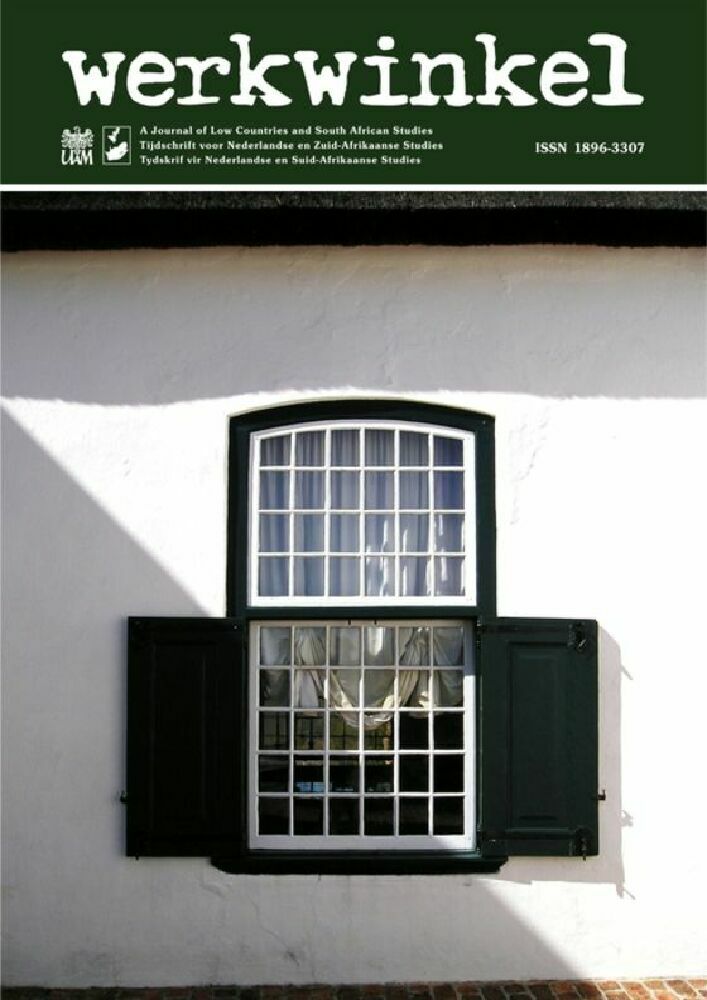Abstract
The article gives a brief ‘idea history’ of Hesperian melancholy a.k.a. Hesperian depression, the fleeting state of dejection that some humans and animals experience at dusk. The term was apparently coined by the South African poet and naturalist Eugene Marais (1871-1936), who noticed the phenomenon during his field observations of baboons. Marais' observations of primates were in the first place an attempt to shed more light on the evolutionary roots of the human psyche and its afflictions - not in the least his own. A personal focus seems probable in his notes on the use of euphoria-inducing substances among animals and humans, which are an evident reflection of his own morphine addiction; but also in his writings about Hesperian depression. During his lifetime, Marais only published about Hesperian depression twice, once in a very concise article in English, and once in more elaborate form in Afrikaans. The term ‘Hesperian depression’ only became more current when his manuscript on primate behaviour, The Soul of the Ape, was posthumously published in 1963. Since then, the term and its description sometimes appear in (popular) publications of paleobiologists and scholars of the evolution of human behaviour. In psychology and psychiatry, the term was introduced by the eminent American psychoanalyst William G. Niederlander, who presented it in a 1971 article in Journal of the American Psychoanalytic Association as an idea of his own. It is evident, however, that he took his cue from Marais, who thus was posthumously plagiarized.
References
Arlow, Jacob A. 1994. “William G. Niederland, M.D. 1901-1993.” Psychoanalytic Quarterly 63: 101-103.
Clark, Richard. 2006. The Multiple Natural Origins of Religion. Bern: Peter Lang.
Heywood, Christopher. 2004. A History of South African Literature. Cambridge: Cambridge University Press. Focke, Wenda. 1992. William G. Niederland: Ein Portrӓt. Psychiater der Verfolgten. Seine Zeit - sein Leben - sein Werk. Wurzburg: Kӧningshausen … Neumann.
Kritzinger, M.S.B. 1957. “Eugène N. Marais as digter.” Versamelde Gedigte. E. Marais. Pretoria: J.L. van Schaik. viii-xvi.
Marais, Eugène N. 1926a. “Baboons, Hypnosis, and Insanity.” Psyche: An Annual General and Linguistic Psychology 7.2 (October): 104-110.
Marais, Eugène N. 1926b. “Die Siel van die Aap: Euforiese vergiftiging.” Die Huisgenoot 3 December 1926: 19-23, 10 December 1926: 15-21.
Marais, Eugène N. 1927. “Die Siel van die Aap: Hesperiese Neerslagtigheid.” Die Huisgenoot 13 Mei 1927: 10-13, 15.
Marais, Eugène N. 1938. Burgers van die Berge. Pretoria: J.L. van Schaik.
Marais, Eugène N. 1957. Versamelde Gedigte. Pretoria: J.L. van Schaik.
Marais, Eugène N. 1965. ′n Paradys van Weleer en ander Geskrifte. Kaapstad & Pretoria: Human and Rousseau.
Marais, Eugène N. 1973. The Soul of the Ape. Hammondsworth: Penguin.
Marais, Eugène N. 2006. Versamelde werke. Ed. Leon Rousseau. 2 dln. Kaapstad: Human & Rousseau. <http://www.dbnl.org/tekst/mara002vers01_01/>.
Marais, Johannes Lodewyk. 2001. ′n Ondersoek naar die aard van en opvattings oor Eugène N Marais se wetenskaplike prosa. Proefschrift: Universiteit van Pretoria, 23 Feb. 2013 <http://upetd.up.ac.za/thesis/submitted/etd-02282006-110206/unrestricted/00front-1.pdf>.
Morris, A.G. 2009. “Zuckerman versus Marais: a primatological collision.” South African Journal of Science 105 (May/June): 238-240.
Niederland, William G. 1971. “On Hesperian Depression.” Journal of the American Psychoanalytic Association 19: 799-805.
Porterfield, Allen W. 1929. “Up From Savagery.” The Virginia Quartely Review: A National Journal of Literature … Discussion 5.4 (Autumn): 615-620, 23 Feb. 2012 <http://www.vqronline.org/articles/1929/autumn/porterfield-up-savagery>.
Rand, Ayn. 2007. Atlas in Staking. Vert. Jan de Voogt. Krommenie: Boekenmaker.nl.
Reybrouck, David van. 2001. De plaag: Het stille knagen van schrijvers, termieten en Zuid-Afrika. Amsterdam: Meulenhoff.
Rosenthal, Norman E. 2013. Winter Blues: Everything You Need to Know to Beat Seasonal Affective Disorder. New York: Guilford Press.
Rousseau, Leon. 1974. Die Groot Verlange: Die Verhaal van Eugène N. Marais. Human & Rousseau: Kaapstad … Pretoria.
Swart, Sandra. 2004a. “‘Bushveld Magic’ and ‘Miracle Doctors’ - An Exploration of Eugène Marais and C. Louis Leopoldt’s Experiences in the Waterberg, South Africa, c. 1906-1917.” Journal of African History 45: 237-255.
Swart, Sandra. 2004b. “The construction of Eugene Marais as an Afrikaner hero.” Journal of Southern African Studies 30.4: 847-867.
Thompson, Robert Lowe. 1929. The History of the Devil: The Horned God of the West. London: Kegan Paul, Trench, Trubner.
Toit, F.G.M. du. 1957. “Eugène Nielen Marais 1872-1936.” Versamelde Gedigte. E. Marais. Pretoria, J.L. van Schaik. i-vi.
University of Johannesburg Library and Information Centre B12. 1995. “Eugène N. Marais Collection: Inventory.” 23 Feb. 2013 <https://ujdigispace.uj.ac.za/bitstream/handle/10210/3361/E.%20N.%20Marais%20inventory.pdf?sequence=1>.
z.a. z.d. “Eugène Marais.” 9 Jan. 2013 <http://af.wikipedia.org/wiki/Eug%C3%A8ne_Marais>.
License

This work is licensed under a Creative Commons Attribution-NonCommercial-NoDerivatives 3.0 Unported License.

